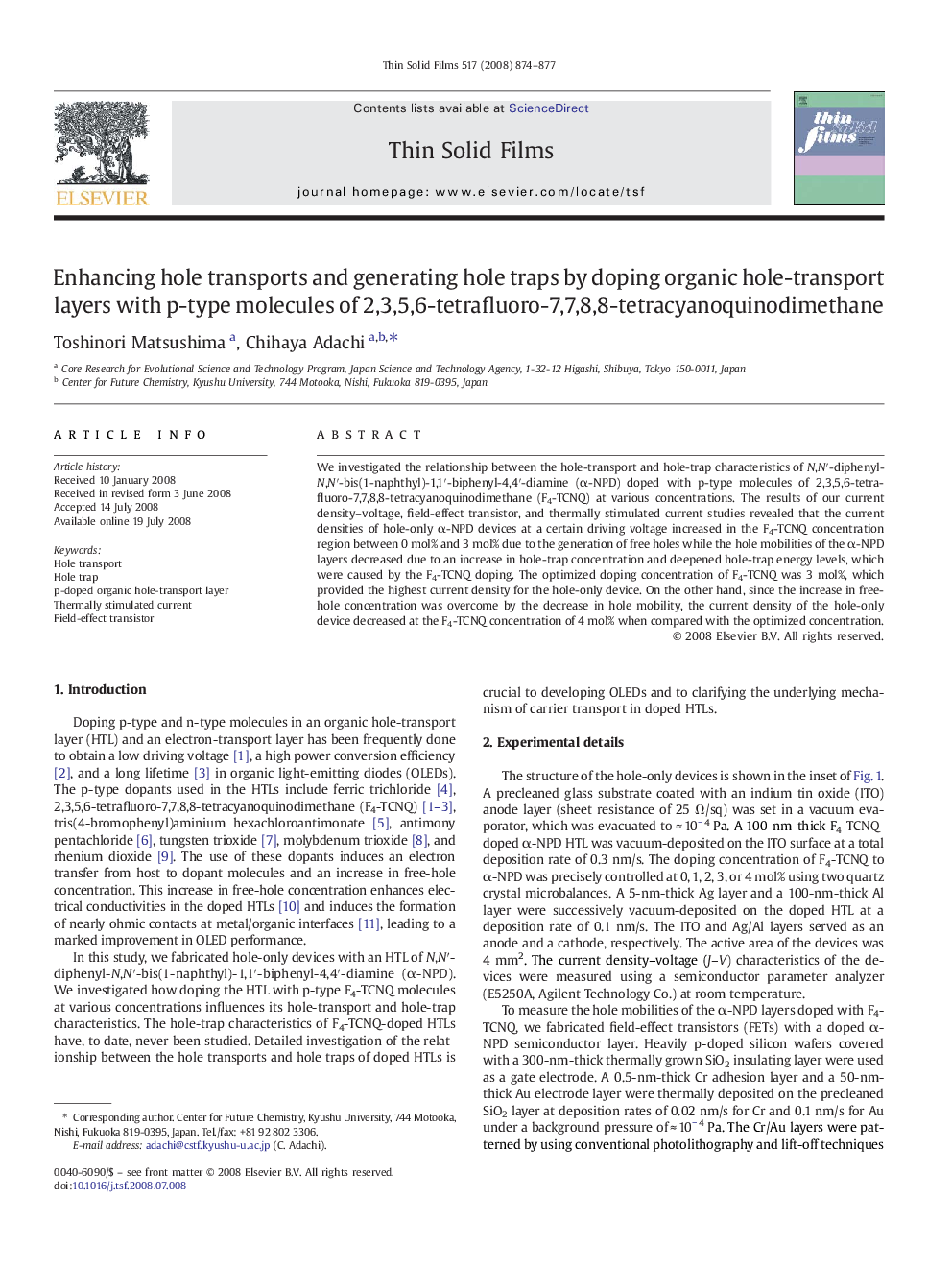| Article ID | Journal | Published Year | Pages | File Type |
|---|---|---|---|---|
| 1670177 | Thin Solid Films | 2008 | 4 Pages |
We investigated the relationship between the hole-transport and hole-trap characteristics of N,N′-diphenyl-N,N′-bis(1-naphthyl)-1,1′-biphenyl-4,4′-diamine (α-NPD) doped with p-type molecules of 2,3,5,6-tetrafluoro-7,7,8,8-tetracyanoquinodimethane (F4-TCNQ) at various concentrations. The results of our current density–voltage, field-effect transistor, and thermally stimulated current studies revealed that the current densities of hole-only α-NPD devices at a certain driving voltage increased in the F4-TCNQ concentration region between 0 mol% and 3 mol% due to the generation of free holes while the hole mobilities of the α-NPD layers decreased due to an increase in hole-trap concentration and deepened hole-trap energy levels, which were caused by the F4-TCNQ doping. The optimized doping concentration of F4-TCNQ was 3 mol%, which provided the highest current density for the hole-only device. On the other hand, since the increase in free-hole concentration was overcome by the decrease in hole mobility, the current density of the hole-only device decreased at the F4-TCNQ concentration of 4 mol% when compared with the optimized concentration.
